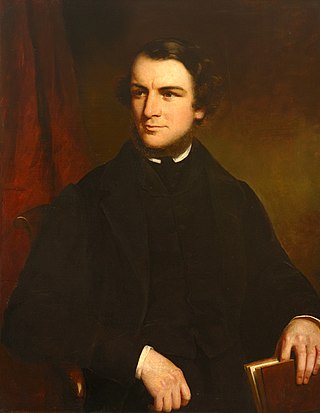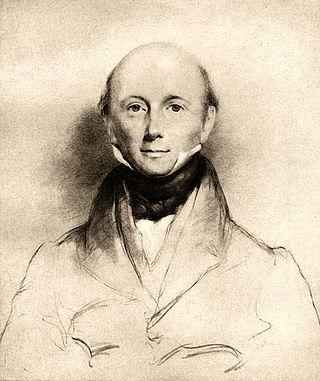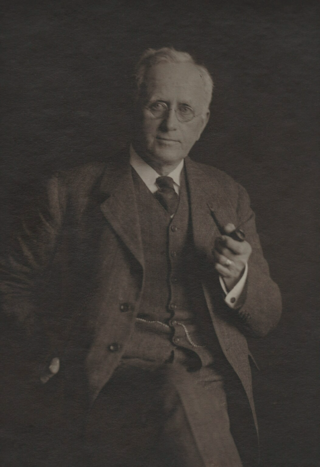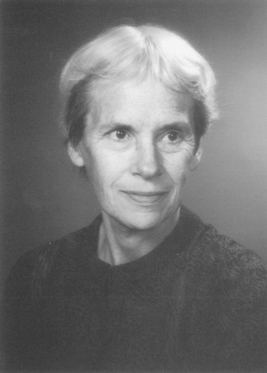Related Research Articles

The Geological Society of London, known commonly as the Geological Society, is a learned society based in the United Kingdom. It is the oldest national geological society in the world and the largest in Europe, with more than 12,000 Fellows.

Thomas George Bonney was an English geologist, president of the Geological Society of London.

John Phillips FRS was an English geologist. In 1841 he published the first global geologic time scale based on the correlation of fossils in rock strata, thereby helping to standardize terminology including the term Mesozoic, which he invented.

The Royal School of Mines comprises the departments of Earth Science and Engineering, and Materials at Imperial College London. The Centre for Advanced Structural Ceramics and parts of the London Centre for Nanotechnology and Department of Bioengineering are also housed within the building. The school as an organisation no longer exists, having been incorporated into the Faculty of Engineering since 2003. Today the Royal School of Mines refers to both the departments associated with the former school, and the Grade II listed Edwardian building by Sir Aston Webb, which is viewed as a classic of academic architecture. The building and relevant student union still carry the name.

John Whitaker Hulke FRCS FRS FGS was a British surgeon, geologist and fossil collector. He was the son of a physician in Deal, who became a Huxleyite despite being deeply religious.

Sir Archibald Geikie was a Scottish geologist and writer.

George Bellas Greenough FRS FGS was a pioneering English geologist. He is best known as a synthesizer of geology rather than as an original researcher. Trained as a lawyer, he was a talented speaker and his annual addresses as founding president of the Geological Society of London were influential in identifying and guiding contemporary geological research. He also courted controversy, after using his presidential address in 1834 to cast aspersions on a paper on great earthquakes by Maria Graham. Greenough advocated an empirical approach to the early science; his scepticism of theoretical thinking courted controversy amongst some contemporaries, especially his doubts of the usefulness of fossils in correlating strata. He compiled a geological map of England and Wales, published in 1820, and in the penultimate year of his life used similar methods to produce the first geological map of British India. Greenough characterised himself as follows: ʻbright eyes, silver hair, large mouth, ears and feet; fondness for generalisation, for system and clearliness; great diligence, patience and zeal; goodnature but hasty; firmness of principle; hand for gardening.ʼ

Richard Alan Fortey is a British palaeontologist, natural historian, writer and television presenter, who served as president of the Geological Society of London for its bicentennial year of 2007.

Sir Albert Charles Seward FRS was a British botanist and geologist.

John Wesley Judd was a British geologist.
Women in geology concerns the history and contributions of women to the field of geology. There has been a long history of women in the field, but they have tended to be under-represented. In the era before the eighteenth century, science and geological science had not been as formalized as they would become later. Hence early geologists tended to be informal observers and collectors, whether they were male or female. Notable examples of this period include Hildegard of Bingen who wrote works concerning stones and Barbara Uthmann who supervised her husband's mining operations after his death. Mrs. Uthmann was also a relative of Georg Agricola. In addition to these names varied aristocratic women had scientific collections of rocks or minerals.

Henry Hicks (1837–1899) was a Welsh physician and geologist during the 19th century.
Sir Arthur Elijah Trueman was a British geologist.
John Frederick Norman Green was an English geologist who won the prestigious Lyell Medal in 1925 and served as president of the Geological Society of London between 1934 and 1936.
Sir Robert Stephen John Sparks,, is Chaning Wills Professor of Geology in the Department of Earth Sciences at the University of Bristol. He is one of the world's leading volcanologists and has been widely recognised for his work in this field.

Janet Vida Watson FRS FGS (1923–1985) was a British geologist. She was a professor of Geology at Imperial College, a rapporteur for the International Geological Correlation Program (IGCP) (1977–1982) and a vice president of the Royal Society (1983–1984). In 1982 she was elected president of the Geological Society of London, the first woman to occupy that position. She is well known for her contribution to the understanding of the Lewisian complex and as an author and co-author of several books including Beginning Geology and Introduction to Geology.
Sir (Cyril) James Stubblefield FRS (1901–1999) was a British geologist. Stubblefield was president of the Geological Society of London from 1958 to 1960 and was director of the Geological Survey of Great Britain from 1960 until 1966.
Thomas Neville George FRS FRSE LLD was a Welsh geologist. He was president of the Geological Society of London.
Edward Howel Francis, BSc, DSc, FRSE, FGS was a British geologist and Emeritus Professor of Earth Sciences at the University of Leeds. He was President of the Geological Society of London from 1980 to 1982.

Edmund Johnston Garwood was a British geologist and President of the Geological Society of London from 1930 to 1932.
References
- ↑ "Past Presidents". The Geological Society of London. Archived from the original on 17 February 2012. Retrieved 1 April 2011.